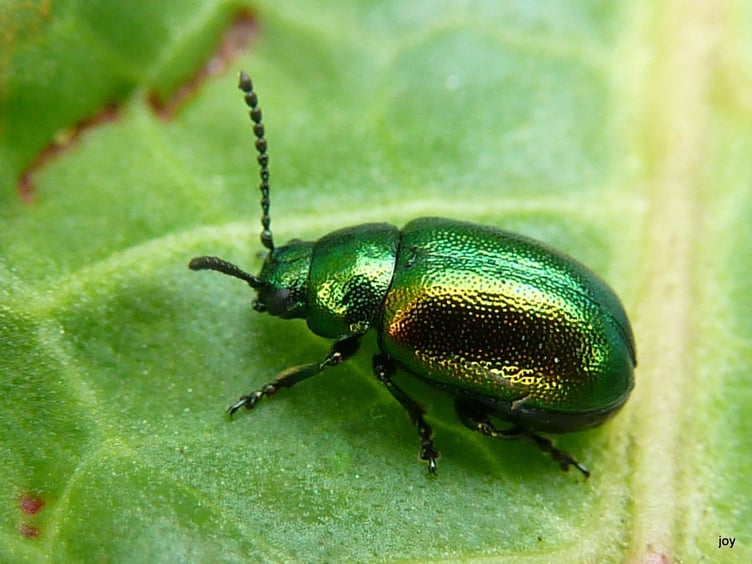The Manx Wildlife Trust is the island’s leading conservation charity, looking after Manx wildlife and monitoring it. The range of life - biodiversity - on the island is much wider than most people realise, and in this year’s articles we are delving into the miniature world of invertebrates which share our island.
Beetles are the third largest order of insects in the UK, but what is a beetle?
They have hard wing cases, strong biting jaws and undergo complete metamorphosis.
The adult lays an egg, which hatches into a larva (grub).
This grub eats to grow, shedding its skin several times before turning into a pupa, from which hatches the adult beetle.
Beetles come in almost every shape and size imaginable from huge stag beetles to metallic coloured leaf beetles, to inconspicuous black ground beetles.
Their diets vary from dung to live prey and even dead wood.
But beetles are under threat from loss of habitats due to land use changes, loss of connectivity between habitats, and climate change.
Most people think of beetles as boring, being all like the black shiny ground beetles often found under wood, but we have many colourful beetles and this is just a selection.
The banded sexton beetle, also known as ‘burying beetles’, is one of several beetles with a strong sense of smell and able to locate the dead body of a small bird or mammal.
They carefully hide the animal by digging away the earth beneath or moving it a short distance.
The parent sexton beetles continue to tend the carcass and feed the larvae throughout their lives.
Banded sexton beetles are quite common and readily come to sources of light at night.
Click beetles look uninteresting due to their drab brown colour but when upturned, they arch their backs to create tension in a special hinge in their thorax which then emits a loud click.
This action hurls the beetle into the air at speeds of more than two metres per second, helping them to get back on their feet or out of harm’s way.
The green tiger beetle is a common beetle of heathland, moorland, and sand dunes, and is probably our most exotic looking beetle with a green body, bronze legs and eyes.
It is often seen in bright, sunny conditions and is a fast, agile hunter, running across the ground to catch its invertebrate prey, including spiders, caterpillars and ants.
It is armed with a ferocious set of jaws and long legs that give it an impressive turn of speed.
The common red soldier beetle is one of 40 species of soldier beetles in the UK, they are very common beetles and easily spotted from June to August, as they crowd on to umbelliferous flower heads like hogweed.
Keen gardeners need to encourage these beetles into their gardens as the adults feed on aphids (as well as pollen and nectar) and the larvae prey on ground-dwelling invertebrates such as slugs and snails.
Look for their red-orange colouring with dark tips to their wing cases...and they’re often found in pairs!
Many beetles really can be gardener’s friends, so how can you encourage more beetles into your garden?
• Leave cutting back your flower beds until late winter.
The dead plant stems are used by overwintering beetles and other invertebrates such as spiders.
• Find a place for dead wood in your garden.
This could be a dead or dying tree left to stand, a cavity in an old tree, or a pile of old stumps and logs and are a great food source for many beetle larvae.
• Piles of rocks will provide daytime shelter for nocturnal beetles.
And piles of leaves are also great, as many species like to lay their eggs in decaying leaves.
If you enjoy learning about our invertebrates why not join in one of the Invertebrate group’s sessions, you can find out about them on our website mwt.im





Comments
This article has no comments yet. Be the first to leave a comment.